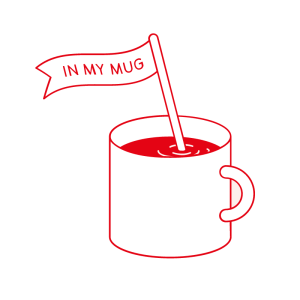
Finca El Fuerte was named in honor of the 'Fort of Samaipata', which is a unique ruin in Bolivia. El Fuerte de Samaipata (Fort Samaipata), also known simply as 'El Fuerte', is a pre-Columbian archaeological site, unique in that it represents the legacies of Inca, Spanish and Chanè cultures and is one of Samaipata's main attractions. Situated in the eastern foothills of the Bolivian Andes, in the Santa Cruz department of Florida province, the archaeological site is also a UNESCO World Heritage site.
El Fuerte de Samaipata is not actually a military fortification, but it is generally considered a pre-Columbian religious site, built by the Chané people, who were a pre-Inca culture of Arawak origin. There are also ruins of an Inca city built near the temple; the city was built during the Inca expansion to the southeast. Both Incas and Chanés suffered several raids from Guarani warriors, who invaded the region from time to time. Eventually, the Guarani warriors conquered the plains and valleys of Santa Cruz, and destroyed Samaipata. The Guaranis dominated the region well into the Spanish colonial period.
The Spaniards also built a settlement near the temple, and there are remains of buildings of typical Andalusi Arabic architecture. The Spaniards abandoned the settlement and moved to the nearby valley, where the town of Samaipata is currently located. The archaeological site at El Fuerte is unique, and it encompasses buildings of three different cultures: Chanés, Incas and Spaniards.
El Fuerte was a first experiment in developing coffee in a region with excellent characteristics for producing amazing quality coffee (good soil conditions and high altitude), but traditionally little coffee production and no specialty coffee. After consulting with a specialised agronomist, the region of Agua Rica at the edge of the Amboró National Park, some 20km east of Samaipata, was chosen as the ideal location.
Initially several different varietals were tried, including Red Bourbon, and Yellow and Red Caturra - although nowadays Agricafe (who run the farm) have ventured into growing other varietals. Caturra and Typica (both are traditionally grown in Bolivia) are commonly seen, but alongside other slightly rarer varietals like Java and Geisha. Although there is little need for trees for shade as the altitude keeps the temperature down, trees were planted to protect the coffee trees from the strong winds that are common in the region.
Deciding to go ahead and plant coffee at El Fuerte was something of a risk, but it's one that undoubtedly has paid off. The location has proved to be strategic and the weather is ideal, so much so that a second wet mill will soon be established at the site - and once it is, all coffee produced in the Samaipata farms will be processed at El Fuerte.
In the cup this is all about the sweet flavours. It makes me think of a part melted chocolate bar. There's a shoulder of red apple acidity, then it shifts into sweet almond on the finish, leaving a creamy aftertaste behind.
- Country: Bolivia
- Province: Florida
- Department: Santa Cruz
- Farm: Finca El Fuerte
- Altitude: 1,550–1,700 m.a.s.l.
- Variety: Red Bourbon
- Process: Washed
- Drying: Stationary Dryer (72 hours, 40º temp)
Clean cup (1–8): 6
Sweetness (1–8): 6.5
Acidity (1–8): 6
Mouthfeel (1–8): 7
Flavour (1–8): 6.5
Aftertaste (1–8): 6
Balance (1–8): 7
Overall (1–8): 6
Correction (+36): +36
Total: (max. 100): 87
Roast Information
Medium dark - slow it down but push it through the gap between cracks, you're looking for those very first pops of second on the drop.
More Episodes
 2019-11-02
2019-11-02
 2019-10-19
2019-10-19
 2019-09-28
2019-09-28
 2019-08-17
2019-08-17
 2019-07-27
2019-07-27
Create your
podcast in
minutes
- Full-featured podcast site
- Unlimited storage and bandwidth
- Comprehensive podcast stats
- Distribute to Apple Podcasts, Spotify, and more
- Make money with your podcast
It is Free
- Privacy Policy
- Cookie Policy
- Terms of Use
- Consent Preferences
- Copyright © 2015-2024 Podbean.com






